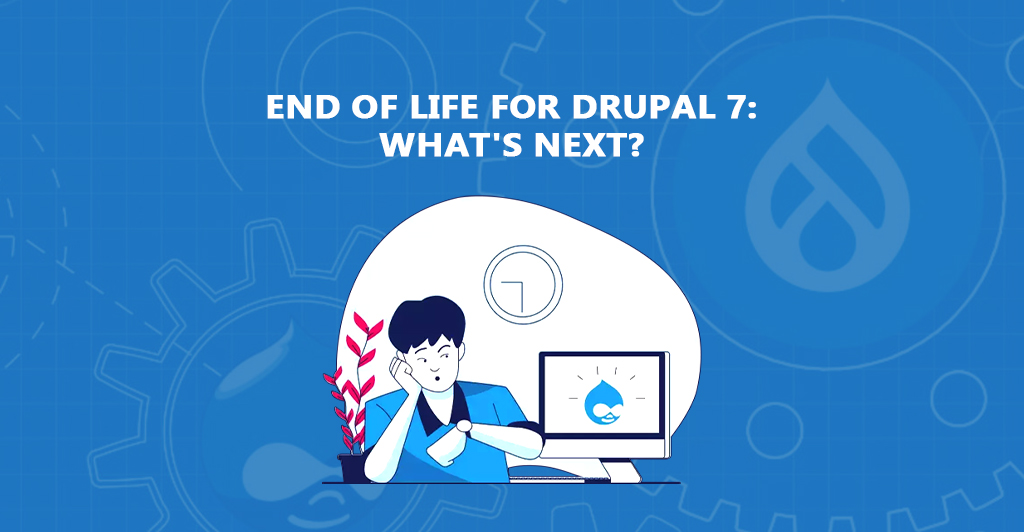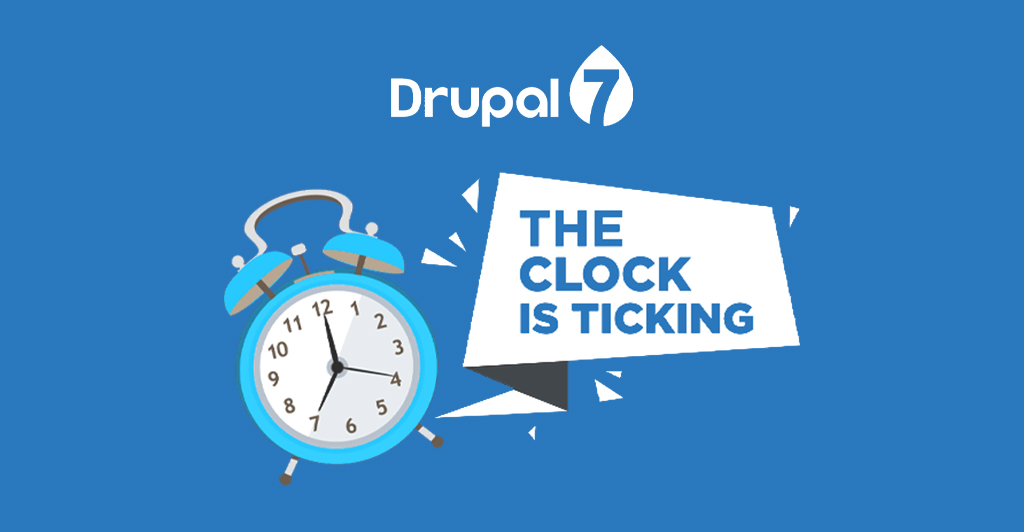The end of Drupal 7 is officially supported by the developers till January 2025 after which the support will come to an end. Since January 2011, from the date of Drupal 7.0 release it has been widely accepted and now in its seventh stage of globally recognised CMS world, with over 11,000 contributed modules, 600 themes, and 200 distributions. It’s crucial to understand and make informed decision for your site. In this blog we will dive deep into Drupal 7’s End of Life (EOL) and cover the options available for Drupal 7 websites, after the official support is over.

It’s crucial to understand and make informed decision for your site. In this blog we will dive deep into Drupal 7’s End of Life (EOL) and cover the options available for Drupal 7 websites, after the official support is over.
What to expect for end of Drupal 7
The versions of Drupal
By understanding the history of the platform, we can appreciate the platform’s evolution.
In its early stages, Drupal was known as Dorp (the Dutch word for “village”), and it was far from the versatile tool that we use today. In 2000s, Dorp (soon to be names as Drop) was primarily a place for then-college student Dries Buytaert and the social network at his university to talk about current events and organise get-together.
Drupal 1.0: It wasn’t long before Dries decided to formalise his creation and release it as a software. It was based on slash (another CMS) with 18 core modules and this version of Drupal was code-intensive. Everything in this version of Drupal was accessed via PHP files, but even then, it was flexible, elegant, and simple to use.
Drupal 2.0: By the year of 2001, Dries began listening, and in turn, responding to user demand. He started to allow Drupal users to create or translate their Drupal based websites into other languages, and with 22 core modules. This version released in two months, with minor additions, like the ability to edit a comment after it was posted.
Drupal 3: The Drupal 3 release reached a critical point for the CMS framework by implementing node interconnections and core module expansion to 26 which brought new life to many websites that implemented Drupal as their foundation. A significant increase in content occurred because many websites adopted Drupal as their framework during this time.
Drupal 4: The international Drupal 4 movement started in 2002 by combining Metatags and taxonomy with additional attributes. The CMS became enterprise-ready because of this development. Drupal experienced a 300% content growth in 2003 which led to the first official Drupal conference in 2005.
Drupal 5: The open-source content management system Drupal 4 gained developer support by achieving increased popularity. The January 2007 release of Drupal 5 received 1173 patches from 500 developers together with 2500 modules. The new release included 29 core modules alongside jQuery support and a web-based installer and a CSS preprocessor for faster loading times.
Drupal 6: In 2008, Drupal 6 was enhanced with drag and drop administration, new menu and security systems, and was adopted by the White House during the Obama administration, with 7,000 modules and 600 custom themes contributed by users.
Drupal 7: Web application development evolved through Drupal 7 which provided more than 11,000 contributed modules along with 600 custom themes, thus becoming the top website development platform for all types of projects.
Drupal 8: The release of Drupal 8 in November 2015 implemented a substantial redesign that creates a new upgrade system which makes Drupal 7 outdated yet sustains its CMS performance for current web development requirements.
Drupal 9: After launching Drupal 9 in June 2020 the development team removed deprecated elements from the codebase while updating essential dependencies like Symfony and Twig.. Layout Builder together with PHP Unit took the place of Place Blocks and Simple Test in the core of Drupal. The upgrade process from Drupal 8 to Drupal 9 was the most important change because it simplified future upgrades.
Drupal 10: The latest version of Drupal 10 presents various new functions such as Olivero front-end theme and Claro back-end theme as well as CKEditor 5 and decoupled navigation which attract site builders. The platform provides users with the simplest system to upgrade their installations. What Drupal 7 and 8 site owners need to know about it.
What Drupal 7 and 8 site owners need to know about it

If you are a Drupal 7 site owner
Website owners will no longer have access to official technical support for Drupal 7 after the official end of life. The lack of new security patches and updates for Drupal 7 will lead to higher cyber-security risks which will affect your website security. Your website security and performance remain protected through a website upgrade plan which needs to be at the forefront of your priorities.
If you are a Drupal 8 site owner
The upgradation of Drupal 7 to Drupal 9 or 10 is easy, with its in-built development path. And also, Drupal 8’s end of life is passed, so it’s time to start considering about your upgrade plans.
If you are a Drupal 9 site owner
Drupal 9 site owners face an easier transition path. The developers who created Drupal 9 focused on maintaining consistency to make Drupal 10 development smooth.
Staying on Drupal 7
Drupal 7 users face pressure to switch to Drupal 9 or 10 although financial limitations and technical issues may make some organizations decide to remain on the older version. Technology vendors provide extended support programs for Drupal 7 websites which protect both security and performance yet require extra payments from the site owners.
Why upgrade from Drupal 7 to Drupal 10
Drupal 7 to Drupal 10 migration provides multiple benefits which make the complex process worthwhile. The system upgrade delivers a secure and efficient platform which employs modern web standards to build an accessible website that maintains your site's technological relevance through upcoming feature releases.
Conclusion
Drupal 7 will reach its end of life in January 2025 and users have two choices for site management: continue using Drupal 7 beyond the EOL date or perform a complete site migration to Drupal 9 or 10. The new methods involve completely abandoning Drupal 7 through CMS removal while maintaining website functionality and continuing to use Drupal 7 for content publication and implementing a Drupal theme -based site reconstruction to speed up the transition to Drupal 10.



